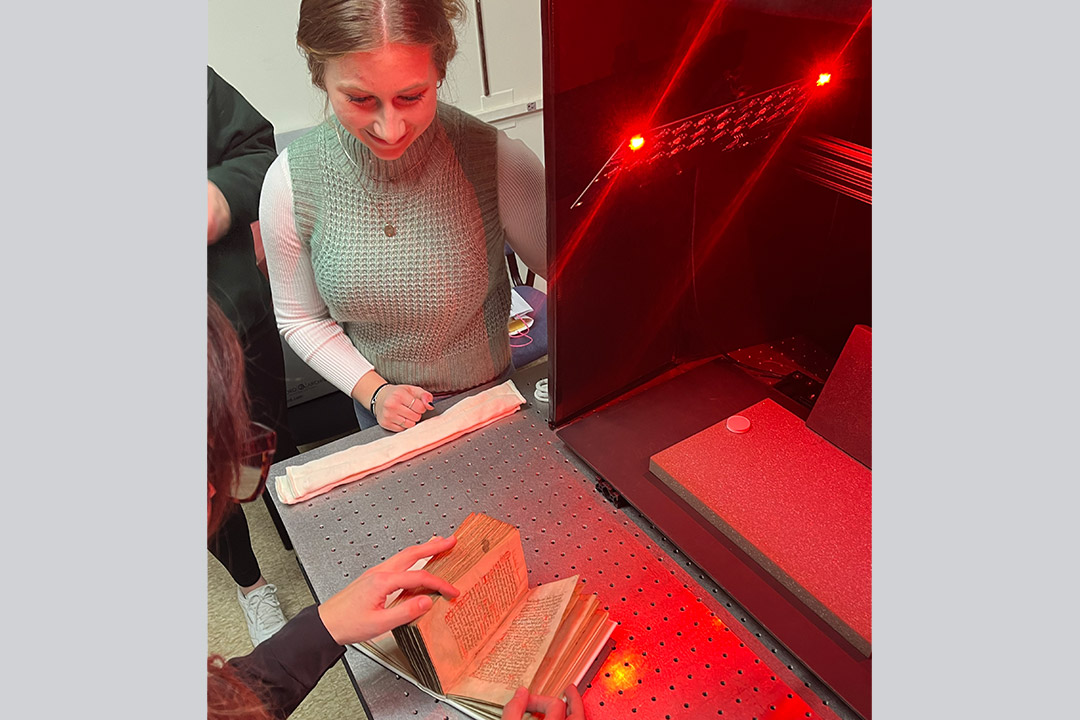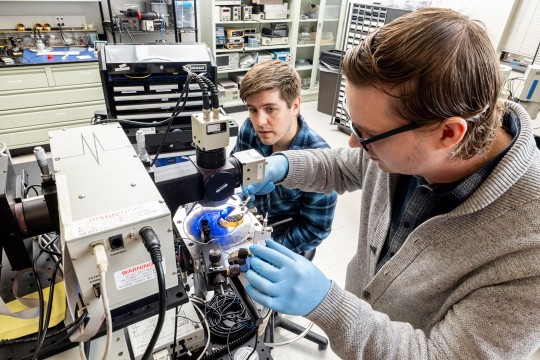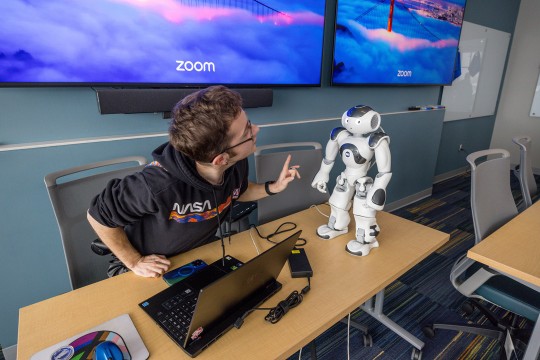Students use low-cost multispectral imaging system to uncover hidden texts
Museum studies majors incorporate imaging science to present and demonstrate system
Photo provided by Juilee Decker
RIT student Kyra Schultz had the opportunity to talk about the MISHA imaging project at conferences across the country.
“Growing up, I always wanted to do something with my life that incorporated both the liberal arts and STEM,” said Izzy Moyer, a third-year museum studies student from Rochester, N.Y. After taking the course Cultural Heritage Imaging with David Messinger, a professor in the Chester F. Carlson Center for Imaging Science, Moyer remembers thinking, “This is it. This is something I want to do with my life. I want to do imaging science.”
Moyer earned an internship working with other RIT students on MISHA, the Multispectral Imaging System for Historical Artifacts. This system was created with funding from the National Endowment for the Humanities (NEH). Throughout her internship, Moyer has presented about MISHA to researchers, museum professionals, and the public in the Netherlands, at Princeton University, at the Michigan State University Science Festival, and, most recently, at Imagine RIT.
The system includes 16 LEDs to illuminate objects using different wavelengths of light, including two in the ultraviolet spectrum and two in the infrared spectrum. After the system takes a photograph of the object at each of these different wavelengths, users can stack and manipulate these images to see the object in new ways. This process allows users to discover palimpsests, documents from which original writing has been removed or written over, and other hidden markings or text.
“One of our biggest developments has been recovery of text on thermal paper, which is similar to receipt paper,” Moyer said. “It was used all the time for communications in the 20th century, but the text fades fast. With MISHA, we’ve been able to recover this text.”
Moyer and Kyra Schultz, a third-year museum studies student from Winchester, Va., who has also been working on the four-student MISHA team funded by the NEH, explained that multispectral imaging systems typically cost more than $100,000, but MISHA only costs around $7,000. The lower price point makes MISHA far more accessible to many museums, libraries, and archives. Plus, the system is relatively quick and easy to set up.
Each student on the MISHA team had a slightly different role, though they are all skilled in using the system. Moyer’s role included work with color science Ph.D. student Leah Humenuck to identify the sets of wavelengths that will work best to image different materials in order to make the process of discovering hidden marks on objects easier and faster.
Schultz focused on integrating finalized images from the system into websites, exhibits, and other tools for museums to display to the public. Presenting at events became one of her favorite parts of the internship. They showed live demonstrations of imaging objects using MISHA and answered questions.
“It was heaven on Earth for a nerdy museum person. It was such a great experience,” Schultz said as she reflected on the weeklong conference at Princeton. “We were surrounded by the people that we all aspire to be professionally and academically, and to have conversations with them and do that network building was an opportunity that you don’t get every day.”








